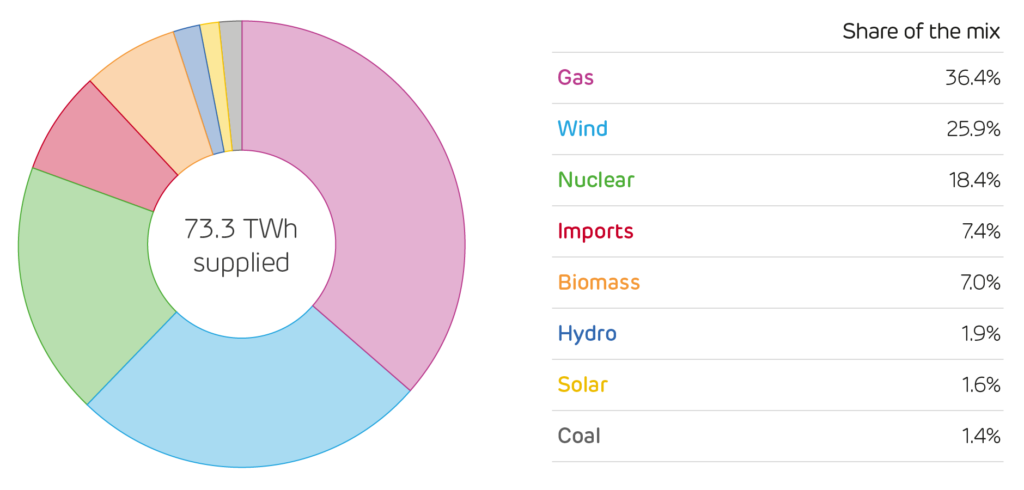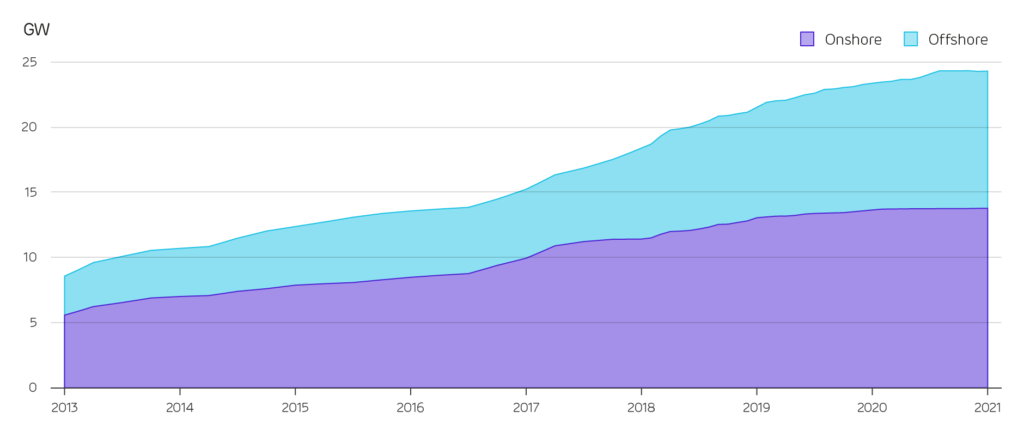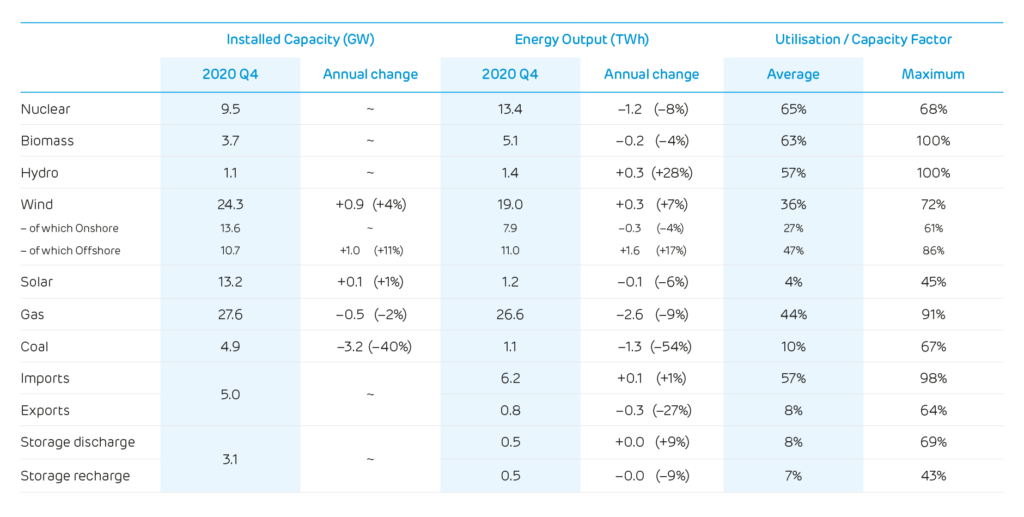Q4 2020: Capacity and production statistics
Download PDF
Dr Iain Staffell, Professor Richard Green, Professor Tim Green, Professor Rob Gross and Dr Malte Jansen -Imperial College London
Demand for electricity last quarter was 4% lower than the year before, as the winter was slightly milder and the second national lockdown kept demand suppressed.
This pushed fossil fuel output down by 12% compared to Q4 in 2019. The capacity factor for gas stations remained below 50% for the seventh quarter running. Across 2020, the capacity factor of gas stations fell below 40%. Coal output fell by more than half compared to this time last year as a slew of retirements through 2020 brought took two over the five remaining coal power stations offline. Coal supplied the smallest share of electricity from any technology for the third quarter in a row.

The moratorium on new onshore wind farms has firmly taken root, nine months after it was reversed. The installed capacity of onshore wind stood still for the whole of 2020 at 13.6 GW.[1] The ban on government support for onshore wind was put in place back in 2015 by the Cameron government. While it was repealed in March last year, the pipeline of new projects will take time to deliver completed wind farms.


[1] BEIS reported no new capacity added through 2020, while RenewableUK reported 90 MW added (0.09 GW). We take the average of both sources, which is < 0.1 GW.
[2] Other sources give different values because of the types of plant they consider. For example, BEIS Energy Trends records an additional 0.7 GW of hydro, 0.6 GW of biomass and 3 GW of waste-to-energy plants. These plants and their output are not visible to the electricity transmission system and so cannot be reported on here.
[3] We include an estimate of the installed capacity of smaller storage devices which are not monitored by the electricity market operator. Britain’s storage capacity is made up of 2.9 GW of pumped hydro storage, 0.6 GW of lithium-ion batteries, 0.4 GW of flywheels and 0.3 GW of compressed air.